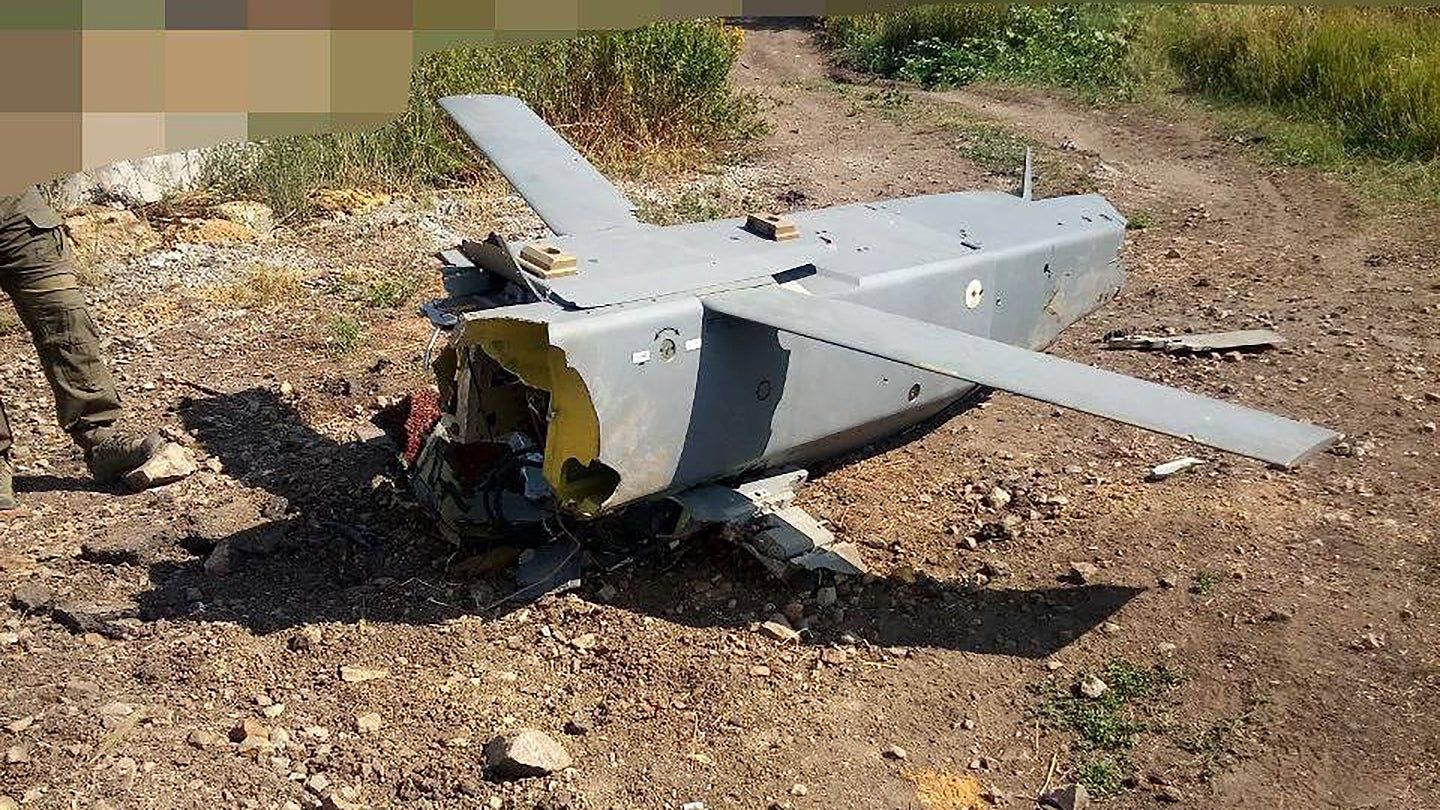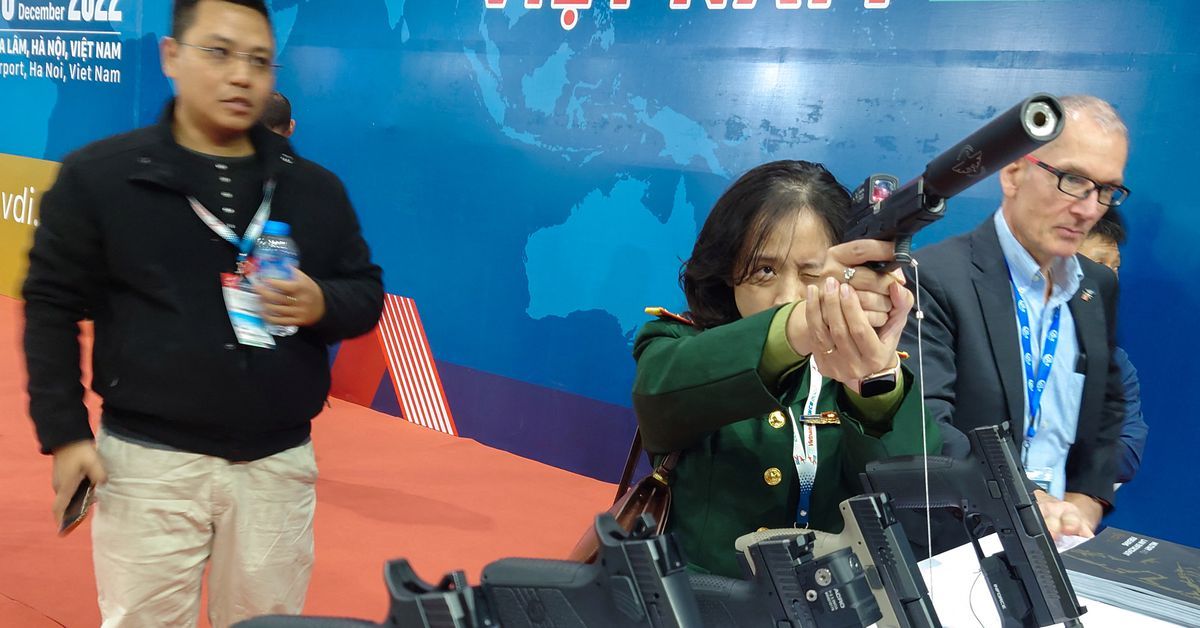Crashed Storm Shadow Missile Falls Into Russian Hands
A Storm Shadow air-launched cruise missile that was donated by the United Kingdom to Ukraine has reportedly fallen into Russian hands in a partially intact state.
The missiles, which are launched from Su-24 Fencers using adapted pylons from now-retired RAF Tornado strike jets, are the longest-range weapon provided to Ukraine and have been used in the fight against Russia's invasion since early May.
The images out of the conflict zone show a Storm shadow that either mechanically failed or was brought down by enemy fire in a field, with its rear fuselage nearly fully intact. Its BROACH penetrating tandem warhead and other components can be seen laying nearby, too. We don't know if this is the first time this has happened, or if this is the most complete example, but it is the first that has been publicly documented.
The technological risk of a Storm Shadow falling into Russian hands is well known and certainly factored heavily into the United Kingdom's decision to provide them to Ukraine. The type's use in Syria has already set a precedent, but that theater is quite different compared to Ukraine. There is no access into Russian controlled terrain or airspace in Ukraine.
The Storm Shadows are being used to strike high-value targets deep inside Russian-controlled territory that is heavily defended. Losing some due to enemy fire and malfunction is a certainty. We have even seen indications that other high-end capabilities have been employed to help ensure the survival of these prized weapons as they make their way to their targets.
Still, losing one largely intact is not a welcome development. The Storm Shadow has some low-observable (stealth) features that reduce its signature to enemy air defenses, especially from the frontal aspect. The materials used in its construction, and the design concepts therein, would be of interest and its warhead design would be as well. Its engine would also likely be examined for general intelligence value, but its electronics, and primarily its targeting system, would be of the greatest interest.
Storm Shadow aboard a RAF Typhoon prior to a series of strikes in Syria. (UK MoD)
Storm Shadow uses a GPS/INS and terrain reference for navigation, but its terminal stage of flight relies on a high-resolution imaging infrared (IIR) seeker with automatic target recognition (ATR). The system works by matching imagery uploaded into its onboard memory to what its seeker sees as it makes its terminal attack run. Onboard computing then matches the target and it executes its attack, pinpointing not just a structure or object to hit, but where to hit it. This system is autonomous — no man-in-the-loop control is needed — and it is extremely accurate. It also helps in avoiding hitting the wrong target. Above that, it is impervious to radio frequency jamming and other means of RF electronic warfare.
If this sensor, and the onboard electronics and software that support it, were recovered in anything but a destroyed state, they could be used to better understand its capabilities and targeting process and exploit weaknesses in it. It can also be used to improve Russian systems, which have fallen behind in these regards.
A now retired RAF Tornado carrying a pair of Storm Shadows. (RAF)
In fact, Russia may already be reacting to Storm Shadow's automatic target recognition systems, and to the possibility that other Western missiles that use similar arrangements may show up in the future. Independent naval warfare analyst HI Sutton has reported on the new paint jobs that are being applied to the Black Sea Fleet's major surface combatants. Basically, the scheme blacks out the ends of its hull — bow and stern — to change the silhouette of the vessels. While Sutton has stated this is likely to confuse drone boat operators as to what targets they are seeing, we contend that this could also be a countermeasure to ATR-capable missiles, like Storm Shadow, and others that very well may be on the way soon.
Using special paint that reduces IR signature in the wavelengths these seekers work at could potentially confuse their targeting logic. Basically, the imagery they see would not match that of the targeting imagery/models loaded up into its computer, and thus it would not attack the intended target. How effective such a countermeasure might be is not clear, but Russia invests in other cruise missile countermeasures that are of dubious value.
So, the more that is known about these missiles' seekers and their computing backend, the more Russia will be able to adapt to their use for certain targets. That being said, it is likely that in some cases software logic can be tweaked to overcome such countermeasures, if they are even effective at all.
Finally, Storm Shadow is a relatively advanced missile, but it is not cutting edge. It has been in operational service for 20 years and in development for many years prior to that. Russia surely knows quite a bit about it via traditional intelligence gathering channels, so impacts from losing one, or at least major components of one, might be muted. Still, exploitation via crash retrievals, where the hardware is in your hands, provides insights that cannot be gained via other means. You can read all about this practice and its history in this past feature of ours.
As for the Russian Ministry of Defense, this is their latest take from Telegram on the Storm Shadow's performance so far in the conflict:
"Russian MOD statement today includes this on SS Moreover, overpraised Storm Shadow cruise missiles are regrettably causing civilian fatalities by hitting civilian infrastructure more and more often. Otherwise, they may collapse without bursting frightening only steppe puffins.
...
All this British scrap metal supplied to the Kiev regime, after being remelted, yet to serve the new Russian regions quite well as raw materials during reconstruction work. And the microchips forged from the missiles could probably be inserted into Russian 'washing machines', as in tales Ursula von der Leyen was telling not so long ago."
This certainly won't be the last time a Western standoff weapon lands relatively intact in Russian-controlled territory. That is just the nature of munitions, none of them work as intended 100% of the time and the enemy has a say in their effectiveness, too. This is done via kinetic and non-kinetic means, and Russia is clearly investing serious resources in attempting to counter Storm Shadow's ability to hit farther and harder than anything else in Ukraine's arsenal.
Source: The War Zone


